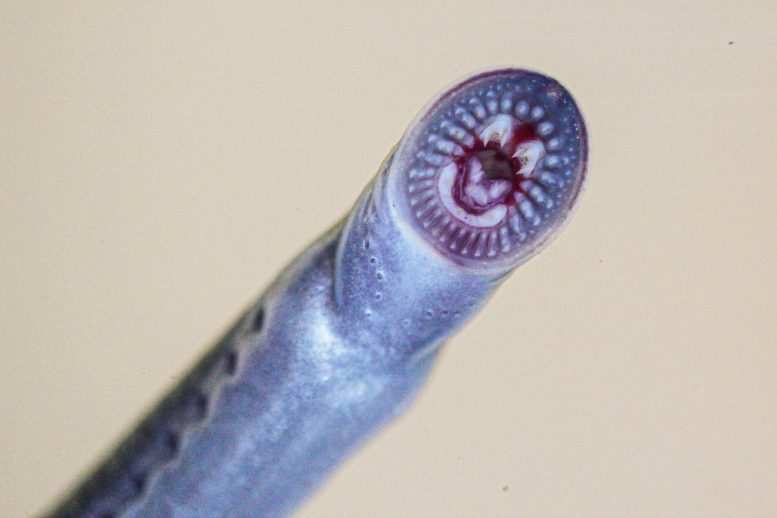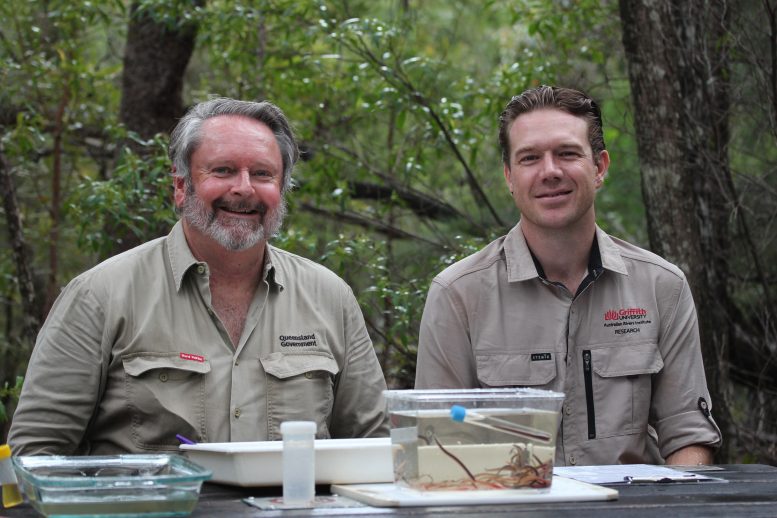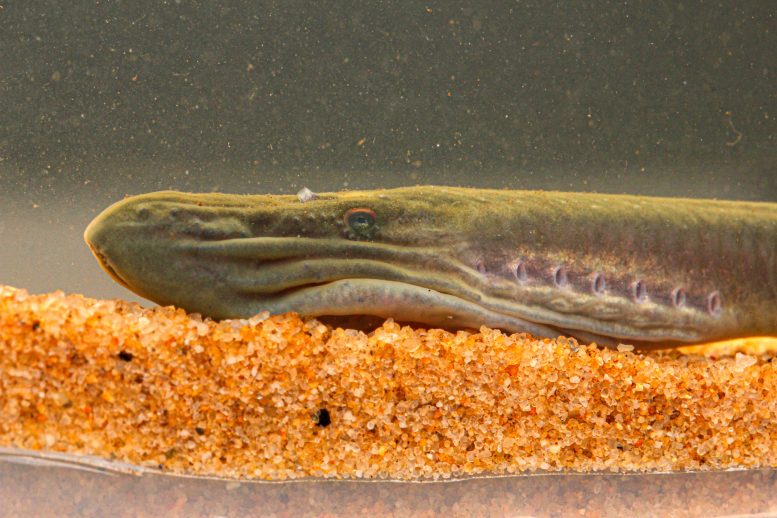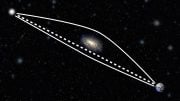
The Australian brook lamprey, a non-parasitic jawless fish, has been found in Queensland, extending its known range. Conservation efforts face challenges due to its mistaken identity with a more common species. Scientists stress the importance of protecting this Endangered species amidst threats like habitat changes and rising sea levels. Credit: David Moffatt
The Australian brook lamprey (Mordacia praecox) belongs to a group of primitive jawless fish. Growing up to 15 cm in length, it has rows of sharp teeth. Unlike most lamprey species, which use their teeth to suck blood, this species is non-parasitic.
As larvae, the Australian brook lamprey lives buried in the bottom of streams for around three years, filter-feeding. Its adult phase is about one year long, in which it doesn’t feed at all. Prior to this study – funded in part by the Australian Government through the National Environmental Science Program’s (NESP) Resilient Landscapes Hub – the species was widely believed to only live in a few streams along a 170 km stretch of coastline near the NSW/Victoria border.
The study began after another exciting discovery: Dr. Luke Carpenter-Bundhoo from the Australian Rivers Institute at Griffith University found the species living in streams on K’gari (Fraser Island). To unravel the mystery of Queensland lampreys, Dr. Carpenter-Bundhoo teamed up with David Moffatt from DESI, who had found isolated populations of lamprey in other Queensland streams.
Together, they confirmed reports of Australian brook lamprey in Queensland, including as far north as Rockhampton! With this enormous extension of its geographic range, the Australian brook lamprey becomes the only lamprey species in the world to live in truly tropical waters.
Conservation Concerns
“It’s quite exciting to find an Endangered species so far out of its known range, yet so close to populated areas. We expect these animals naturally occur in Queensland, and have been here for an awfully long time, but have remained hidden due to their cryptic nature,” said Mr. Moffatt.
The Australian brook lamprey is thought to be extinct where it was first described, in southern NSW. Its existence is thought to be threatened by sedimentation, wildfires, and human development.
Perhaps the biggest threat to their conservation is that they’re very difficult to identify – this species truly faces a case of mistaken identity. For most of their life, the non-parasitic Australian brook lamprey is indistinguishable from its more common blood-sucking southern relative, the short-headed lamprey (Mordacia mordax), which has a conservation status of ‘Least Concern’.

David Moffatt and Dr. Luke Carpenter-Bundhoo with a small tank of Australian brook lamprey. Credit: Troy Harris
Add to this the fact that, globally, only a few people can tell them apart.
In their new Endangered Species Research article, Dr. Carpenter-Bundhoo and Mr. Moffatt outline the difficulties of implementing a conservation strategy for this fish and propose some solutions.
The species’ conservation is especially important, given that projected sea level rises mean that many of the lowland freshwater coastal streams where Australian brook lamprey live are likely to become saltwater.
With these new findings, scientists will be better equipped to conserve this unusual and Endangered species.
Reference: “Expanding the known range and practical conservation issues of the Endangered Australian brook lamprey Mordacia praecox” by Luke Carpenter-Bundhoo and David B. Moffatt, 25 April 2024, Endangered Species Research.
DOI: 10.3354/esr01319
The surveys were partially funded by an NESP project that aims to restore ecosystem health in the Moonaboola (Mary River) catchment area of south-east Queensland and protect threatened species like the Australian lungfish, the Mary River cod and the giant barred frog.










Be the first to comment on "Scientists Discover Unusual Ancient Fish 900 Miles North of Its Previous Known Range"